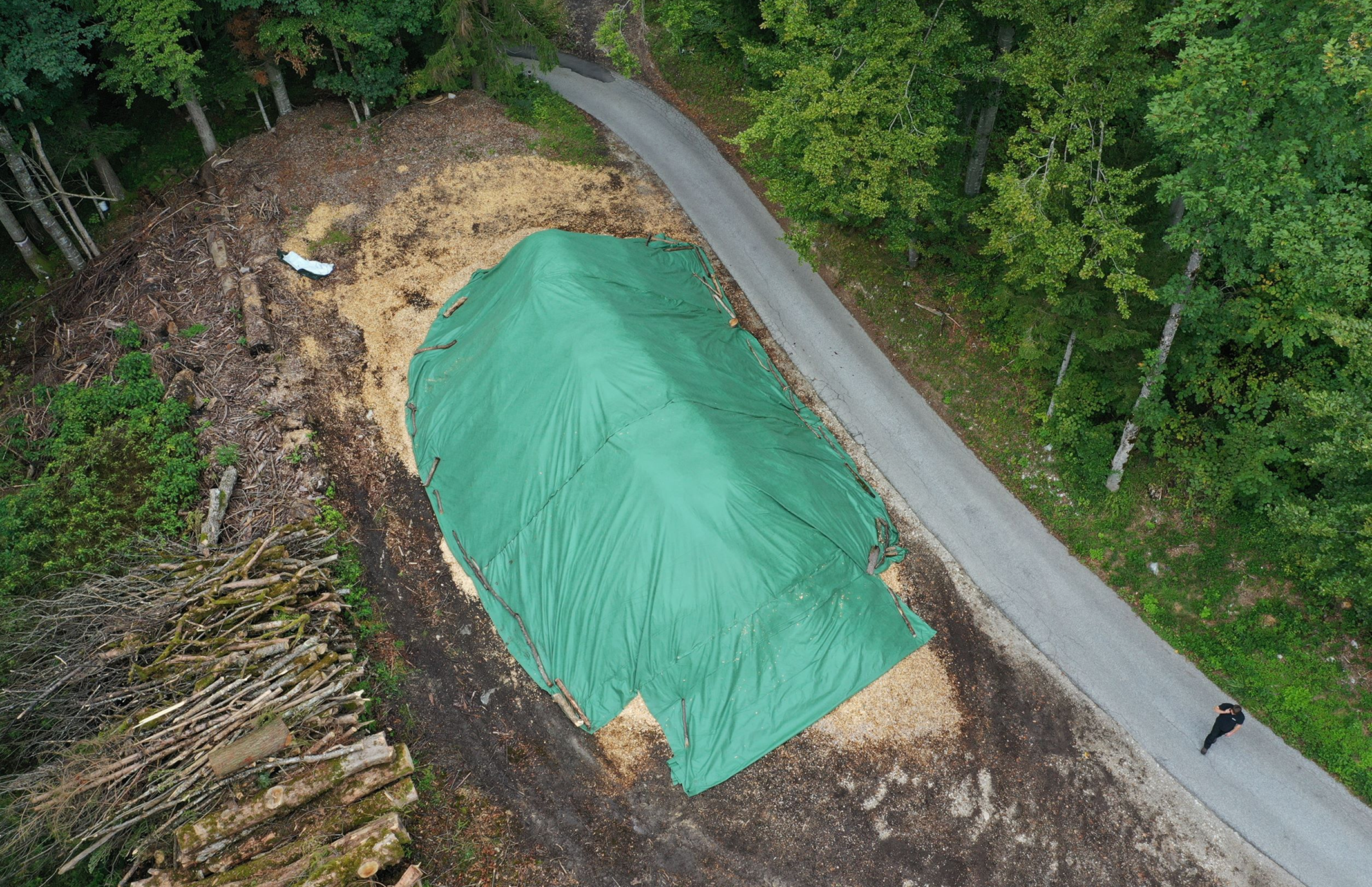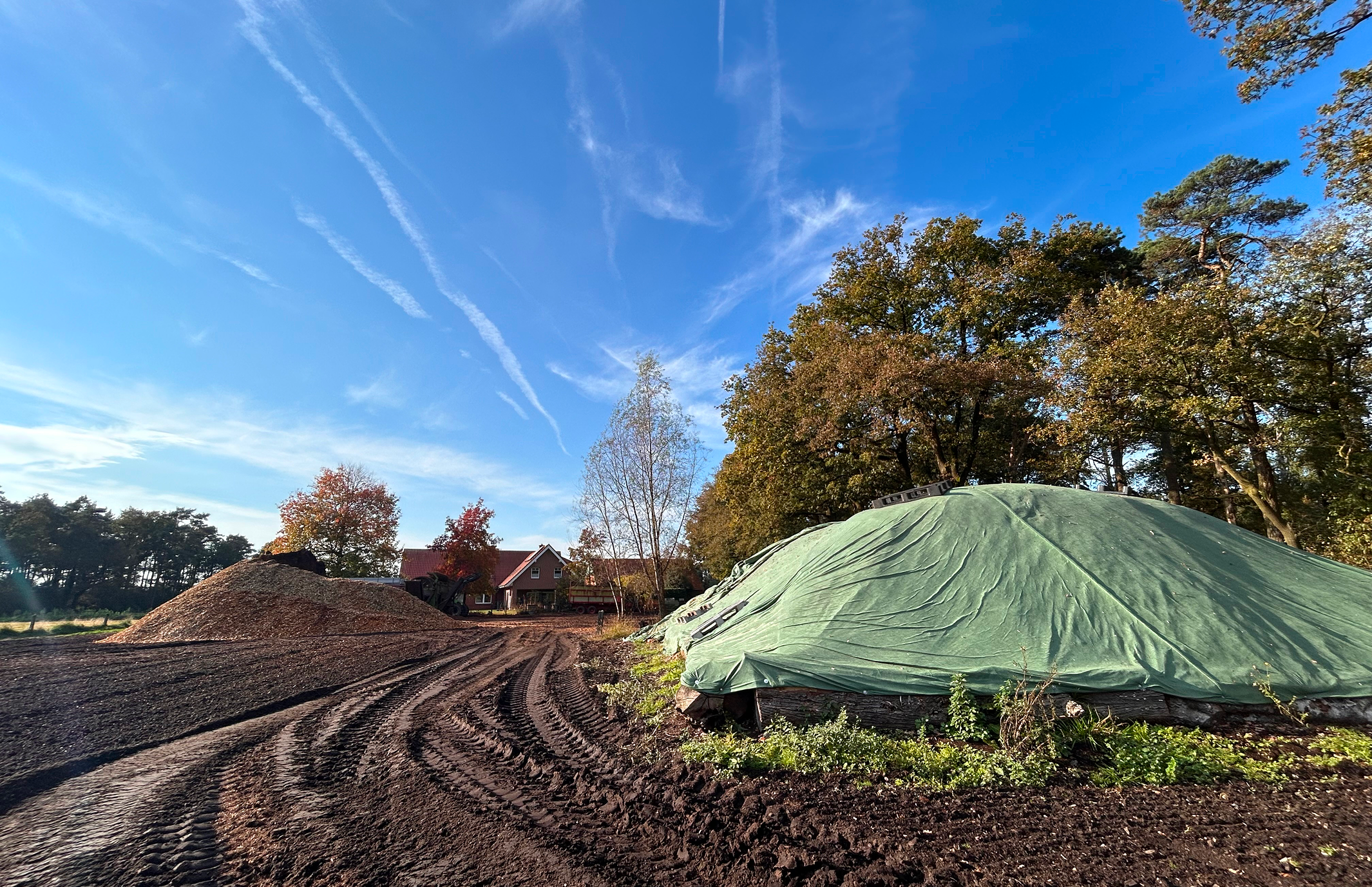Moisture undermines wood chip efficiency
Wood chips serve as a versatile fuel source, prized for their renewable nature and relatively low production cost. However, if these chips absorb excess moisture, their energy output declines substantially.
Moisture undermines wood chip efficiency
Wood chips serve as a versatile fuel source, prized for their renewable nature and relatively low production cost. However, if these chips absorb excess moisture, their energy output declines substantially.
.jpeg)
.jpeg)

.jpeg)
.jpeg)

Wood chip covers – protect energy value with cost-effective storage
Moisture undermines wood chip efficiency
Wood chips serve as a versatile fuel source, prized for their renewable nature and relatively low production cost. However, if these chips absorb excess moisture, their energy output declines substantially.

Overly damp chips can be problematic during combustion, creating smoke, reducing furnace efficiency, and leaving behind residues that clog equipment. Additionally, moisture not only reduces the calorific value but also encourages mold growth which can result in a total loss of such quantities. If the quality drops too far, it may also lead to unplanned downtime as boilers or burners are cleaned and repaired more frequently. For industrial facilities that rely on wood chips for consistent heat or power, moisture-related inefficiencies translate into lost productivity and higher fuel consumption.
Dry chips yield
better returns

When wood chips remain adequately dry, they burn more cleanly and release greater amounts of usable heat. This improves overall efficiency, helping facilities cut fuel expenses and maintain a smoother production schedule. Dryness also lowers the risk of microbial growth, ensuring the chips remain stable in long-term storage. For those who market or sell wood chips, dryness is essential for meeting customer specifications and retaining a competitive edge. Users – whether power plants, commercial heating operations, or individual buyers – prefer chips that are ready to burn without extra steps like re-drying.
A predictable moisture level also helps with forecasting and budgeting. When operators know that a covered pile maintains stable conditions, they can plan usage rates, purchase timelines, and equipment maintenance more reliably. By reducing unexpected variables, businesses can allocate resources more strategically, enhancing both profitability and operational confidence.
Moisture undermines wood chip efficiency
Wood chips serve as a versatile fuel source, prized for their renewable nature and relatively low production cost. However, if these chips absorb excess moisture, their energy output declines substantially.
Dry chips yield
better returns
When wood chips remain adequately dry, they burn more cleanly and release greater amounts of usable heat. This improves overall efficiency, helping facilities cut fuel expenses and maintain a smoother production schedule. Dryness also lowers the risk of microbial growth, ensuring the chips remain stable in long-term storage. For those who market or sell wood chips, dryness is essential for meeting customer specifications and retaining a competitive edge. Users – whether power plants, commercial heating operations, or individual buyers – prefer chips that are ready to burn without extra steps like re-drying.
A predictable moisture level also helps with forecasting and budgeting. When operators know that a covered pile maintains stable conditions, they can plan usage rates, purchase timelines, and equipment maintenance more reliably. By reducing unexpected variables, businesses can allocate resources more strategically, enhancing both profitability and operational confidence.

.jpeg)
.jpeg)

.jpeg)
.jpeg)
.jpeg)
.jpeg)
.jpeg)

How TOPTEX ensures low-moisture storage
TOPTEX wood chip covers feature a water-repellent yet highly breathable fabric that prevents rain from seeping in but allows internal moisture to escape at high rates. This dual function is crucial because it stops new water from entering while letting existing humidity gradually dissipate. Unlike plastic tarps or other covers, TOPTEX can also be used on fresh wood chips helping the pile to dry better during its most effective drying phase. Additionally, plastic tarps trap condensation while TOPTEX facilitates natural air circulation. Studies, including those by the Bavarian Forestry Institute, affirm that chips stored under these covers retain lower moisture levels and higher energy content.
The covers are UV-stabilized, resisting high temperatures and sun damage for multi-season use. Their robust construction and exceptional air-permeability stands up to wind, so operators do not need to repeatedly reposition them. As a cost-effective alternative to building permanent structures, TOPTEX allows facilities to protect large piles with minimal labor and infrastructure. This straightforward approach coupled with the product’s unrivaled lifespan preserves the chips’ fuel quality and curbs losses from rot, mold or increased replacement purchases.




Key benefits
Heading 4
01
Heading 4
01
Heading 4
01
.png)


